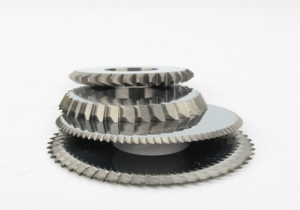Índice
AlternarCarbide Blade
When it comes to woodworking or metalworking projects, the quality of your tools is critical to achieving the best results. One essential tool in any workshop is the chop saw, often equipped with a lâmina de carboneto para serra de corte. Selecting the right carbide blade can significantly enhance your cutting experience and the overall quality of your work. But with so many options available, how do you choose the best one? In this article, we’ll explore key considerations when buying a carbide blade for your chop saw, helping you make an informed decision.
Compreendendo o básico
A carbide blade for chop saw is designed to cut through various materials with precision and ease. Carbide, a tough material known for its durability, is ideal for blades as it can maintain sharpness significantly longer than steel blades. This longevity is one of the primary benefits customers seek when purchasing a carbide blade for chop saw. Moreover, because these blades can handle higher speeds and resist wear, they are excellent investments for your workshop.
Intended Use Matters
Before you even start looking at different types of carbide blades, consider your primary cutting applications. Are you going to be cutting wood, metal, or perhaps composite materials? For instance, if you frequently cut hardwoods like oak or maple, a carbide blade specifically designed for wood would be beneficial due to its tooth design and pitch angle. For example, a blade with a higher tooth count might be more suited for finer cuts in wood, ensuring a smooth finish without splintering.
On the other hand, if your projects involve cutting metal, a carbide blade for chop saw with a lower tooth count and a more aggressive tooth design is ideal. This design allows for faster cuts and reduces overheating. For example, a 60-tooth blade would be better suited for wood, providing a cleaner finish, while a 10-tooth blade would excel at ripping through metal. Always match the blade’s specifications to the material you’ll be cutting for the best results.
Teeth Configuration
The configuration of the teeth on a carbide blade directly impacts its cutting performance. Most carpenters and metalworkers will advise you to consider tooth count as a primary factor. Blades often come with a range of teeth configurations tailored for specific tasks. For example, you might encounter a combination blade, which balances between ripping and cross-cutting, making it versatile for various applications.
Further, some carbide blades for chop saws feature alternate top bevel (ATB) teeth for a sharper cutting edge, while others may have flat-top teeth designed for rough cuts. Each configuration has its benefits, depending on the cuts you make. Using a blade designed for your specific project will help reduce resistance in the cutter, making your work easier and faster.
Quality and Brand Reliability
Not all carbide blades are created equal. Researching brands with a reputation for quality can save you time, money, and frustration in the long run. Top brands like Freud, DeWalt, and Makita offer reliable carbide blades for chop saws, often backed by warranties and customer service that can help address any concerns.
For instance, a blade by Freud, known for its premium quality, can make a noticeable difference in your cutting experience. Many users report improved durability and precision when purchasing blades from reputable manufacturers. Moreover, online reviews and ratings are invaluable resources when comparing brands and finding the right carbide blade for chop saw.
Price vs. Value
While it might be tempting to opt for the cheapest option, consider the long-term value of investing in a quality carbide blade for chop saw. Lower-priced blades may wear out quickly, leading to more frequent replacements and potentially costing more over time. A mid to high-range blade could cut better, last longer, and provide a superior finish, ultimately saving you money.
Consider a scenario where a contractor purchases a inexpensive blade for $30, only to find it dulls quickly after just a few projects. In contrast, investing in a $70 premium carbide blade could mean fewer replacements and better-cutting results. It’s necessary to evaluate what you are getting for your money and how it aligns with your intended use.
Manutenção e Cuidados
Lastly, to maximize the life and efficiency of your carbide blade for chop saw, proper maintenance is crucial. Regular cleaning, avoiding excessive force during cuts, and storing the blade in a protective case can prevent unnecessary wear. Additionally, some manufacturers recommend occasional sharpening to maintain the blade’s cutting edge — an advisable practice that can further extend the life of your investment.
Conclusão
Choosing the right carbide blade for chop saw is not merely about picking a random blade off the shelf. It’s about understanding your needs, knowing the materials you work with, and recognizing the nuances of blade design and quality. By considering the intended use, teeth configuration, brand reliability, price versus value, and ongoing maintenance, you will make an informed decision that mirrors your needs and expectations. The right carbide blade for chop saw not only enhances your capabilities but also elevates the quality of your work. Think carefully about your selection, and you will reap the benefits in your projects for years to come.
